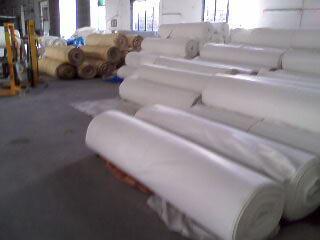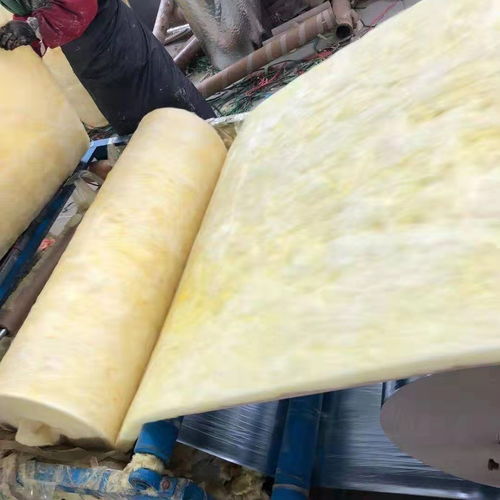A thick felt tension pad is an important auxiliary equipment in the cold rolling industry.
Its function is to install on the tension cylinder of the cold rolling mill to provide uniform tension and ensure the flatness and surface quality of the steel strip.
Thick-felt tension pads have a wide range of applications. In addition to cold-rolled steel strips.
They can also be used for cold-rolling aluminum strips, copper strips, stainless steel strips, and other metal strips.
With the development of the cold rolling industry, the demand and quality requirements for thick felt tension pads have also continued to increase, which has promoted technological innovation and improvement of thick felt tension pads.
The performance and lifespan of thick felt tension pads are closely related to their materials, structures, and specifications.
Different materials, structures, and specifications will affect the temperature resistance, wear resistance, thickness, density, elasticity, stability, etc.
of thick-felt tension pads. aspects, thereby affecting the use effect and cost of thick felt tension pads.
Polyester is a kind of polyester fiber with high strength, wear resistance, and temperature resistance.
It is suitable for high-speed, high-temperature, and high-pressure cold rolling conditions. However.
It has poor air permeability and adsorption properties and is prone to static electricity and slippage. Phenomenon.

Temperature resistance refers to the maximum temperature that the thick felt tension pad can withstand.
Which affects the deformation and aging of the polyester felt tension pad, as well as the temperature and quality of the steel strip surface.
Different materials have different temperature resistance.
Wear resistance refers to the maximum wear that the polyester-felt tension pad can resist.
This affects the breakage and hair loss of the thick felt Foshan Pure Technology Co., LTD tension pad, as well as the wear and scratches on the surface of the steel belt.
Different materials have different wear resistance.
Single-layer structure means that the polyester-felt tension pad is made of only one material. It has a simple structure and low cost.
But has single performance, poor adaptability, and is easy to deform and wear.
The layered structure means that the thick felt tension pad is composed of two or more different materials superimposed in a certain order.
The structure is complex and the cost is high, but it has diverse properties and strong adaptability and can take into account breathability, adsorption, temperature resistance, Wear resistance, etc.
Composite structure means that the polyester felt tension pad is composed of one or more different materials through chemical or physical methods.
The structure is stable and the cost is moderate, but the performance is difficult to adjust and the adaptability is average.
It can improve the strength and stability of the polyester-felt tension pad. sex.

Thickness refers to the vertical dimension of the polyester felt tension pad.
Which affects the compressibility and elasticity of the thick felt tension pad.
As well as the flatness and tension of the steel strip.
Density refers to the ratio of the mass and volume of the polyester felt tension pad.
Which affects the air permeability and adsorption of the polyester-felt tension pad.
As well as the elimination of moisture and grease from the steel strip.
Elasticity refers to the ability of the thick felt tension pad to return to its original shape after being subjected to external force.
It affects the deformation and aging of the polyester felt tension pad, as well as the temperature and quality of the steel strip.
Stability refers to the ability of the polyester-felt tension pad to maintain unchanged performance under different working conditions.
It affects the service life and maintenance cost of the polyester felt tension pad, as well as the flatness and tension of the steel belt.

The polyester felt tension pad with a single-layer structure is suitable for cold rolling conditions of low speed.
low temperature, and low pressure, such as cold rolling of aluminum strips, copper strips, and other metal strips.
Its advantages are simple structure and low cost. Its disadvantages are single performance and adaptability.
Poor performance, easy to deform and wear.
The thick felt tension pad with a layered structure is suitable for high-speed, high-temperature, and high-pressure cold rolling conditions.
Such as cold rolling of steel strips, stainless steel strips, and other metal strips.
Its advantages are diverse performance, strong adaptability, and the ability to take into account breathability.
In terms of adsorption, temperature resistance, wear resistance, etc., the disadvantages are complex structure and high cost.
The thick felt tension pad with composite structure is suitable for cold rolling conditions of medium speed.
Medium temperature, and medium pressure, such as cold rolling of galvanized steel strips, color-coated steel strips, and other metal strips.
Its advantages are stable structure, moderate cost, and ability to Improve the strength and stability of thick felt tension pads.
The disadvantage is that the performance is difficult to adjust and the adaptability is average.

Introduce the common specifications and measurement methods of thick felt tension pads, such as weight, width, length, etc.
Gram weight refers to the mass per square meter of the polyester felt tension pad, the unit is grams.
Which affects the thickness, density, elasticity, and other aspects of the polyester felt tension pad.
Width refers to the horizontal dimension of the thick felt tension pad in meters
Which affects the use range and matching of the thick felt tension pad.
The length refers to the vertical dimension of the polyester felt tension pad in meters.
Which affects the service life and maintenance cost of the polyester felt tension pad.
Analyze the impact of different specifications on the service life, maintenance cost, matching, etc. of thick felt tension pads
As we know, Heat Transfer Printing Felt is suitable for fabrics, decorative fabrics, curtains, le...
Read Safety Rules for Laundry Management to be a qualified manager. PARTⅠ Laundry room Safety Gen...
The extrusion machine is the leading equipment for the production of aluminum profiles. The quali...
Heat transfer printing is a contemporary printing process in the clothing market. It prints the p...
In the textile industry, felt is only a small part but important. About how to choose felt that i...
Foshan Pure Technology Company., Ltd. helps conveyor belt manufacturers source equipment to metal...
Nomex, an intermediate aramid, also known as aramid 1313. It is characterized by good heat resist...
In the 1960s, the Dupont developed a kind of aramid composite material, it is Kevlar. It has very...